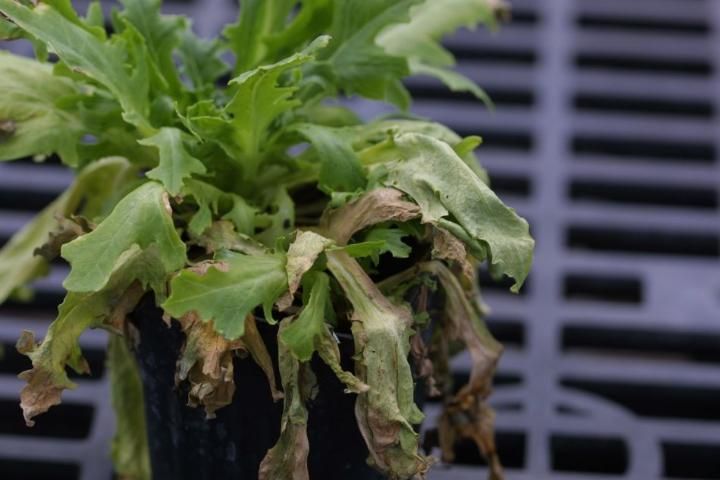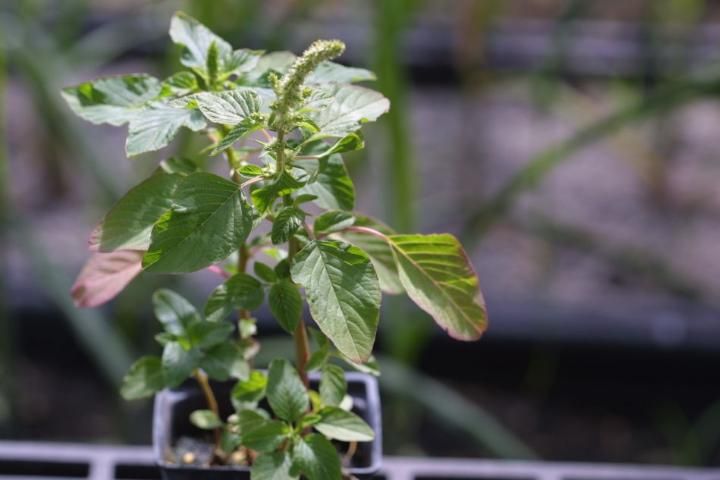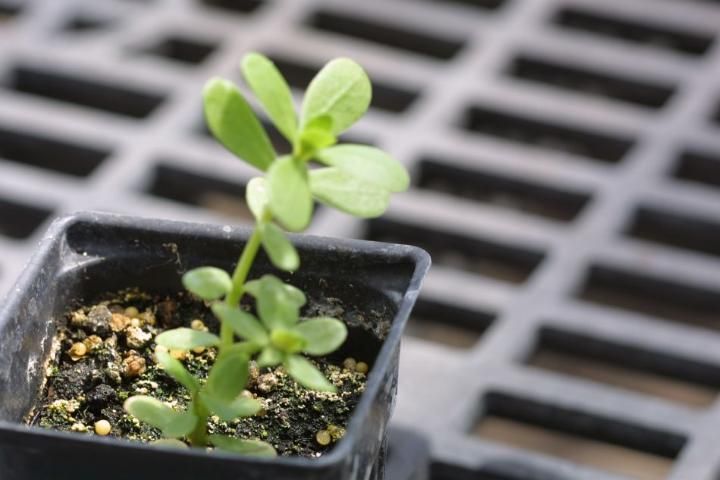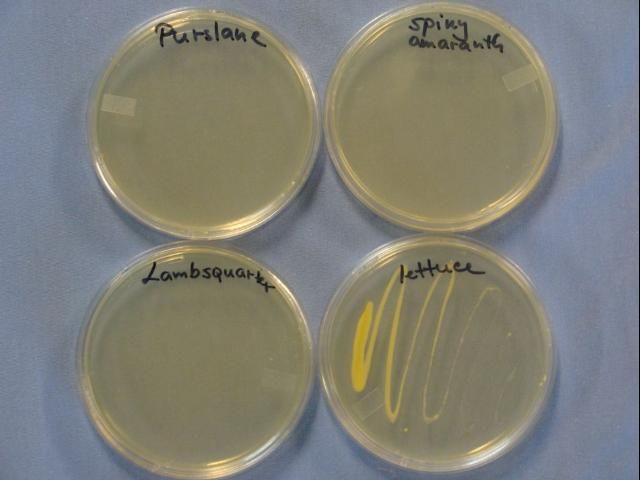Causal Organism and History
Bacterial leaf spot of lettuce, caused by Xanthomonas campestris pv. vitians, was first reported in the United States in 1918 on head lettuce in New York. In Florida, bacterial leaf spot was first reported in the 1992–93 lettuce growing season. All major types of lettuce (crisphead, butterhead, and leaf) were affected, but the disease was more severe in romaine lettuce. So far the disease has not been observed on endive lettuce.
Symptoms
Symptoms of bacterial leaf spot are black, angular, water-soaked lesions that occur primarily on mature, fully expanded leaves (Figure 1). These lesions coalesce as the disease develops, resulting in large necrotic areas and collapse of the leaf. Occasionally, the pathogen may also infect stem tissue, causing stem rot, stunting, and collapse of young plants.

Credit: Nikol Havranek, UF/IFAS
Weeds and Disease Epidemiology
Infected weeds and epiphytic populations on weeds growing in close proximity to lettuce can be possible sources of initial Xanthomonas campestris pv. vitians inoculum. Xanthomonas campestris pv. vitians causes bacterial leaf spot symptoms in broadleaf weeds, including prickly lettuce, trumpet firewood, annual sowthistle, field bindweed, panicle willoweed, shepherd's purse, pineapple weed, netleaf goosefoot, common knotweed, little mallow, and common groundsel. However, it does not cause any bacterial leaf spot symptoms on grass weeds. The most common broadleaf weed species in and around lettuce fields in the Everglades Agricultural Area (EAA) include common lambsquarters, Amaranthus spp., common purslane, common ragweed, ragweed parthenium, and horse purslane. Xanthomonas campestris pv. vitians or its epiphytes do not cause any symptoms on these weed species (Figure 2, 3, and 4). Similarly, no growth of Xanthomonas campestris pv. vitians occurs on glucose nutrient agar following streaking with inoculum from weeds inoculated with Xanthomonas campestris pv. vitians strains (Figure 5). Thus, these weed species may not be sources of Xanthomonas campestris pv. vitians inoculum around lettuce fields in the EAA. However, further studies that are more comprehensive should be conducted to corroborate these observations. Nonetheless, control programs for these weed species in and around lettuce fields should be practiced to forestall other negative effects on production.

Credit: Nikol Havranek, UF/IFAS

Credit: Nikol Havranek, UF/IFAS

Credit: Nikol Havranek, UF/IFAS

Credit: Nikol Havranek, UF/IFAS
References
Barak, J. D., S. T. Koike, and R. L. Gilbertson. 2001. "Role of crop debris and weeds in the epidemiology of bacterial leaf spot of lettuce in California." Plant Disease 85: 169-78.
Davis, R. M., K. V. Subbarao, R. N. Raid, and E. A. Kurtz. 1997. Compendium of Lettuce Diseases. St. Paul: APS Press.
Pernezny, K., R. N. Raid, R. E. Stall, N. C. Hodge, and J. Collins. 1995. "An outbreak of bacterial spot of lettuce in Florida caused by Xanthomonas campestris pv. vitians." Plant Disease 79: 359-60.